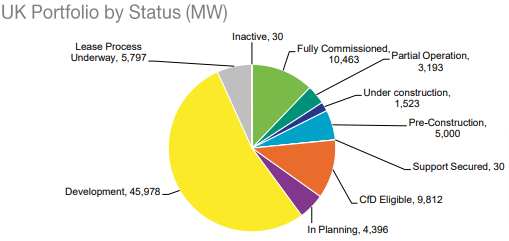Renewable body urges rollout of wind power to lower household bills

Industry group Renewable UK is urging the Government to accelerate the roll-out of wind power to avoid future gas crises for consumers.
Its latest research reveals that wind farms awarded contracts over the past seven years to generate clean energy will save households £250 per year compared to gas generated at this winter’s prices.
Costs have fallen sharply since contracts for difference (CfD) were introduced, with the latest round of offshore wind projects coming in 70 per cent cheaper than those awarded contracts in 2015 .
By contrast, gas prices climbed to record highs this year, with the price cap for household energy bills expected to be above £4,000 per year from April when the Government’s support package is expected to conclude.
Renewable UK has calculated that wind farms supported by contracts for difference will generate 93TWh at a total cost of £5bn.
The equivalent cost of getting that amount of electricity from gas would be around £26bn at current prices.
This means offshore wind power represents a £20bn saving to consumers, with every UK household benefitting by £246 per year.
Energy body warns against risking wind funding
The trade association’s analysis shows that 19 gigawatts (GW) of wind farm capacity have won CfDs since 2015 – representing 30 per cent of annual UK electricity generation at present, enough to power nearly 25 million homes a year.
It has previously calculated 86GW are in various stages of planning development.
This research comes against the backdrop of the Energy Prices Bill, which includes a cap on renewable revenues alongside support for households and businesses.
The group has recently warned the cap risks putting investment at risk and could distort energy markets by skewing incentives towards fossil fuels.
It has also urged new Prime Minister Rishi Sunak to maintain planning reforms to make it easier to ramp up onshore wind.

RenewableUK chief executive Dan McGrail said: “Our analysis shows that the faster we can grow wind energy in the UK, the more consumers will save. To do that, we need a stable framework for investment so that companies are confident they will make a return.
“There is a global race for renewable investment and I want the UK to be the most attractive place in the world to invest in wind so that bill-payers and the wider economy benefit fully from cheap, renewable power.”
The Government has proposed a ‘cost-plus revenue limit’ for onshore wind, which will temporarily cap renewable revenues.
Meanwhile, onshore wind developments have stagnated since 2015, when the Government led by former Prime Minister David Cameron brought in planning hurdles to prevent unpopular projects going through the development process.
The maximum installed capacity of wind farms (in MW) granted planning permission between 2016-2021 is just 2.6 per cent of those granted permission between 2009-2014, according to research from Dr Rebecca Windemer, senior lecturer in environmental planning at the University of West of England.